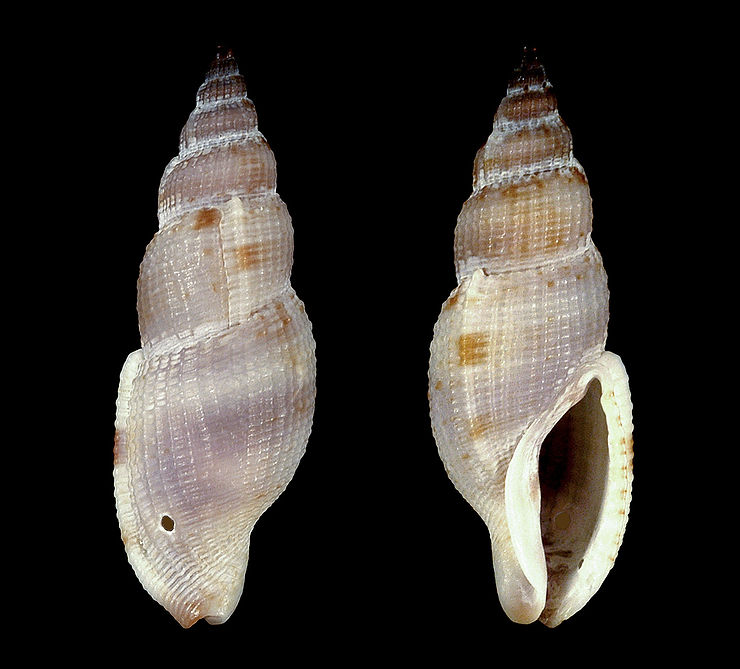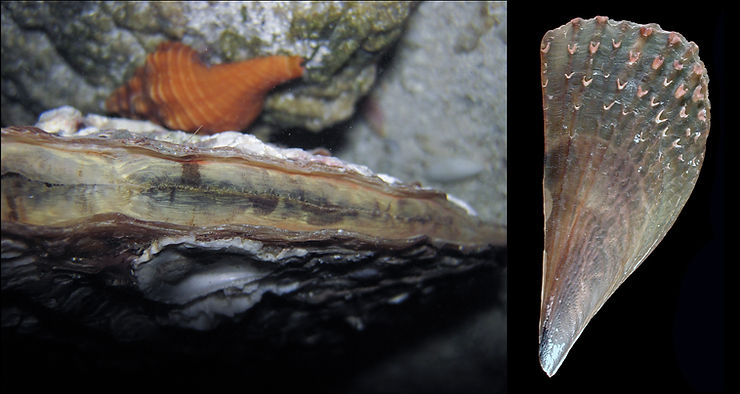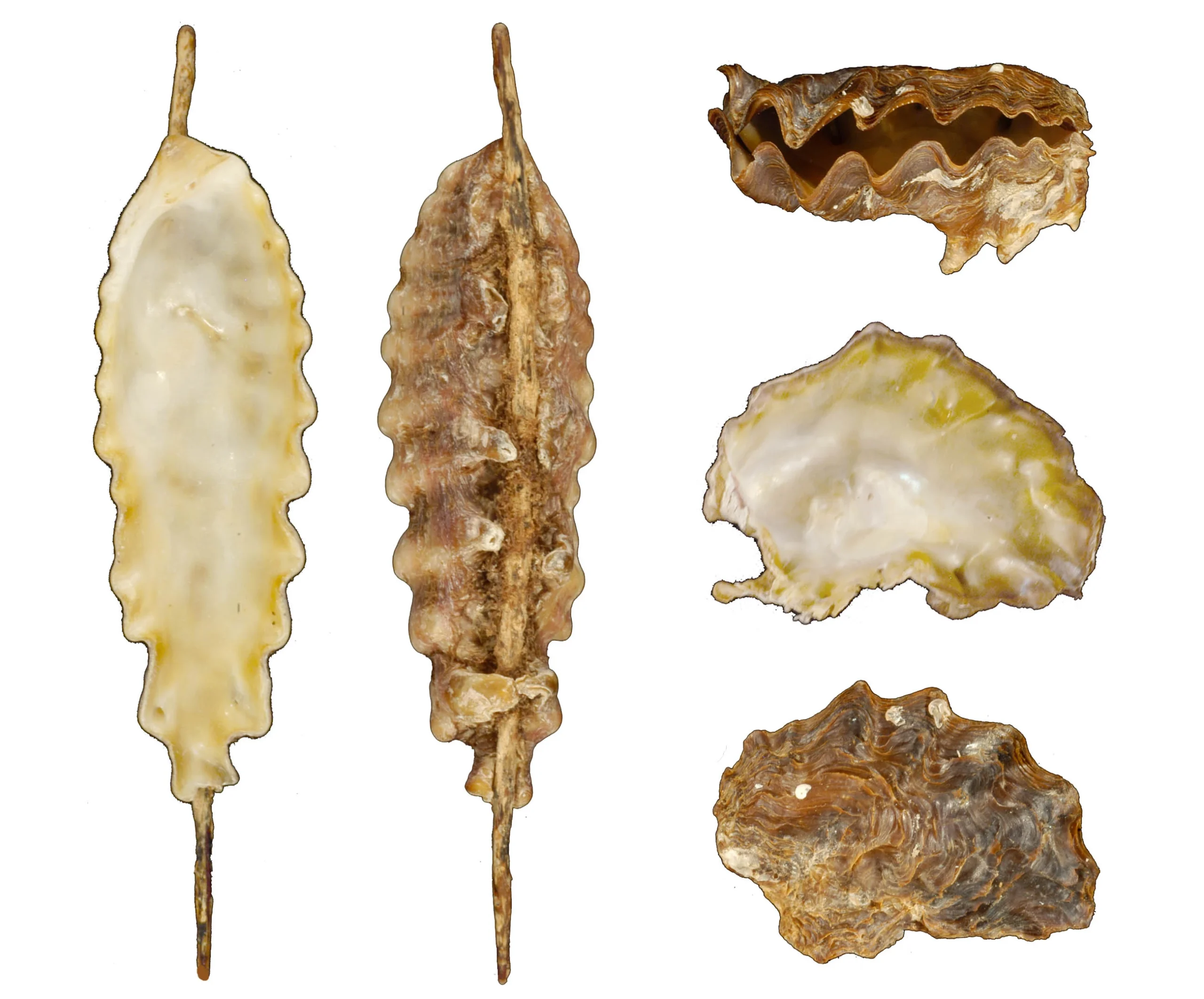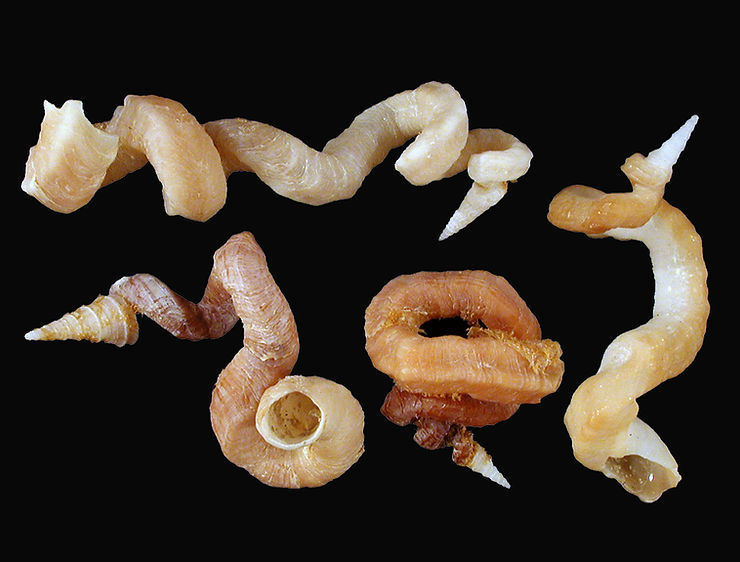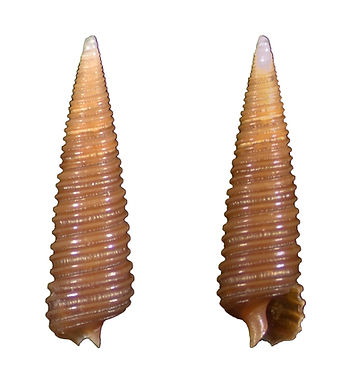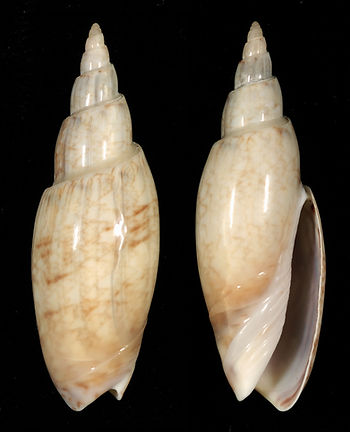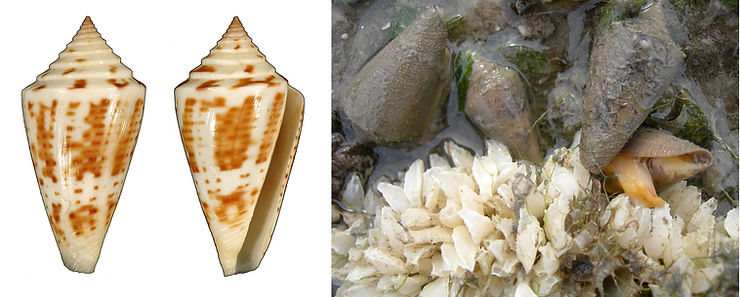
The Florida Cone
Florida Cones, Conus anabathrum Crosse, 1865, inhabit the sandy bottoms of the bays and barrier islands of Southwest Florida, where they feed on Marine Worms. Females perform “communal spawning,” getting together to lay egg cases over relatively large areas in shallow water. The live animals and egg cases in the photo on the right were photographed by Amy Tripp during a collective spawning event near Marco Island, FL. The Florida Cone and its communal spawning. Photo by Amy Tripp. #FloridaCone
